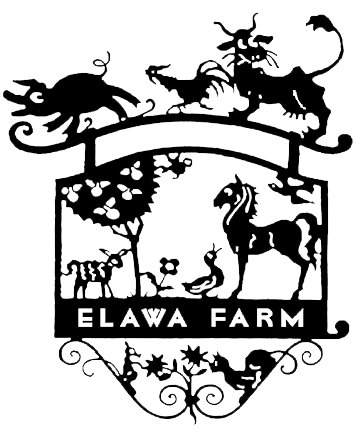
More About Elawa Farm’s History
Ralph Rodney Root
Ralph Rodney Root, 1884-1964 was the designer of A. Watson Armour's Elawa Farm garden as a collaborator with the firm of Beaux-Arts trained architects David Adler and Robert Work. As a partner to Noble P. Hollister, Root also worked with the Adler firm on the garden of the Charles B. Pike Italian villa on Lake Road in Lake Forest, the William McCormick Blair Crabtree Farm in Lake Bluff and the Robert McCormick Cantigny estate in Warrenville. His work highlighted the Chicago suburban formal garden phenomenon of the Beaux-Arts tradition in the early nineteenth century.
Trained at Cornell and Harvard, Root then served as head of the landscape architecture program at the University of Illinois in Urbana, 1912-1918. In 1916 he offered a summer program at Lake Forest College under the sponsorship of the Garden Club of Illinois, centered on Lake Forest. In 1919, the Garden Club of America visited Chicago's North Shore, guided by Root's book of twenty four garden sketch plans. That book is archived at the Lake Forest College today.
Root's garden plan, dated 1918, focused on the barn door with a 320' allee that extended up the gradual incline through the vegetable acre, past ten pear trees standing across the middle of the garden and up onto the tiers of the four cutting flower gardens. The width of the garden extended to the edges of the farm buildings where fruit trees then graced the north and south borders, giving the planted area 2.2 acres (88,000 sq. ft.)
Elawa Farm Gardens
The ornate sign that hung on the cottage at the top of the alle read "Elawa Farm Gardens' during the Armour tenure. The original garden plan identifies staple vegetables such as corn, potatoes, beets, cauliflower, carrots, tomatoes and beans; the addition of parsnips, kohlrabi and salsify certainly represent this period of vintage growth. A. Watson Armour grew a large collection of annuals and perennials in the cutting gardens; he was also an avid dahlia grower, often taking ribbons home from competitions.
Of the border shrubs identified on the plan, Ramnus catharticus (Buckthorn) and Lonicera morrowi (Honeysuckle), once thought useful and beautiful are now considered invasive. Consideration will be given to these factors in resurrecting the garden structure, hence the term "interpretive" restoration. We intend to have the restored garden resemble the original but not necessarily with the same plants.

In 2002 a proposal was introduced to the Elawa Farm Commission by a small, independent group of garden/market enthusiasts that the garden be restored to its days of productive glory. An organic public garden was envisioned, planted, maintained and harvested by volunteers; the produce would be available to the community for sale at an open air market at the farm and the proceeds would be used to support garden operations.
In the fall of 2003, with the blessing of the Elawa Farm Commission, clearing of the 2.2 acre garden began. Seven stalwart volunteers entered the overgrown, buckthorn infested area with chain saws, foraging through the 15' high thickets and piling the debris to burn. Working mostly on weekends, the feat was accomplished in just five months.
The Gardeners at Elawa Farm
The following summer of 2004, with the garden layout now exposed, the buckthorn stumps persisted with resprouts as debris was raked out of the area and disposed of. Bricks, rocks, fence sections, tool parts, a few kitchen utensils and the old irrigation system were hauled off by the truckload. Large stumps were ground professionally, often pro bono, until the deft hand of a Campanella bulldozer driver took care of the small stump removal and some much needed grading.
In the process, some of the original garden's structures were uncovered. Remnants of the stone ledges at the top of the garden lay underneath honeysuckle hedges gone wild, two of the original pear trees were still standing, several cedars along the allee were still up and three of the four stone cubes that supported the garden statues were unearthed. In addition, various shovelheads, pipes, horse shoes and sprinkler heads became a virtual "metal museum" as the dozer digging was replaced by the gardener's digging.
-

By 2005, the 2.2 acre garden was completely cleared and the cutting garden tiers were ready to be shaped and planted. The four tiers were laid out to the exact dimensions and in the same configurations as the original plan, dated 1918.
-

Visits to the garden by grand daughters of A. Watson Armour brought back memories of childhood hide and seek in the maze-like tiers where flowers beds and hedges once rose to 5' feet in height. The beautiful black soil, thought to have been imported as well as farmed extended over two feet down- a harbinger of good things to come.





